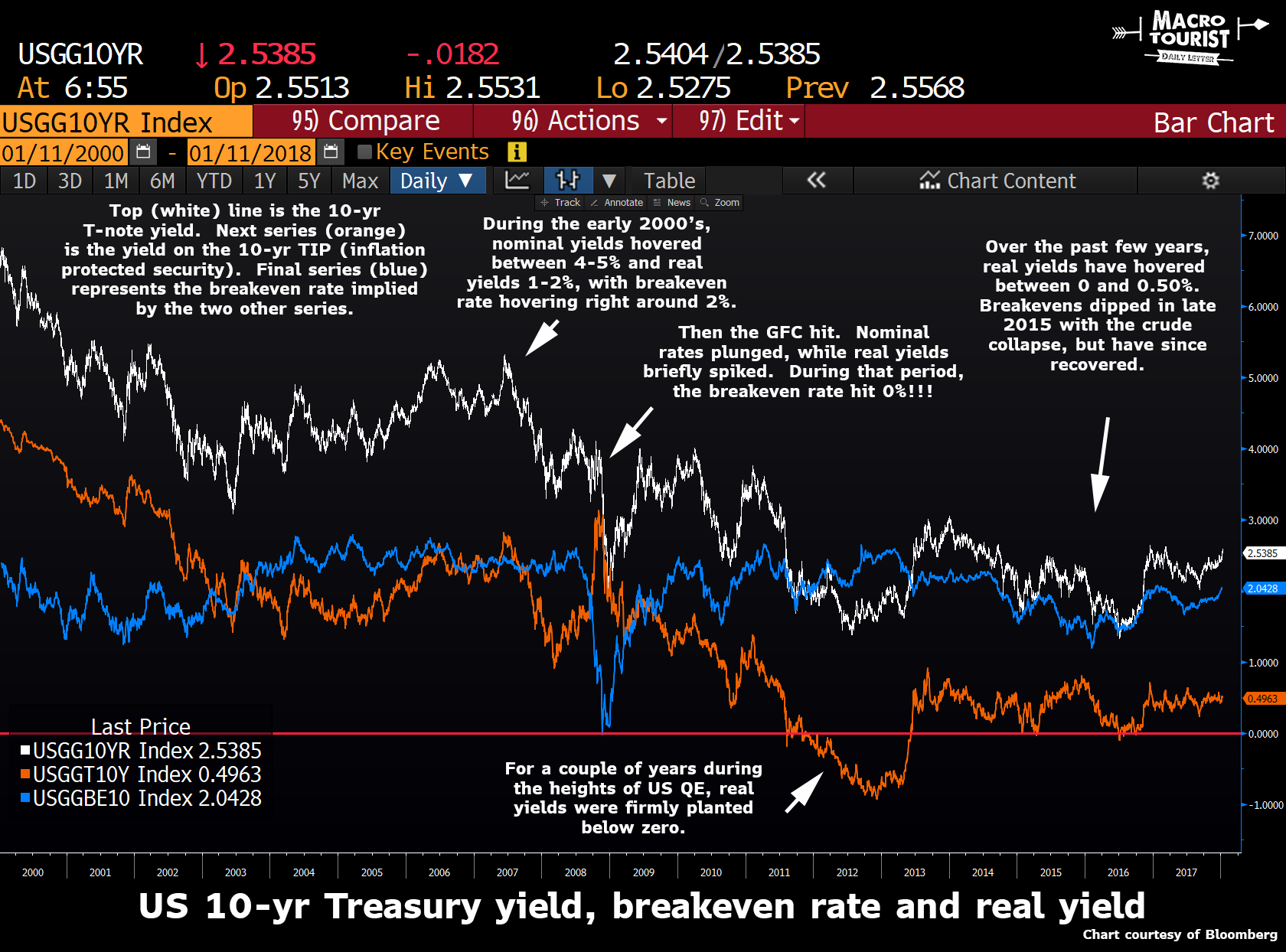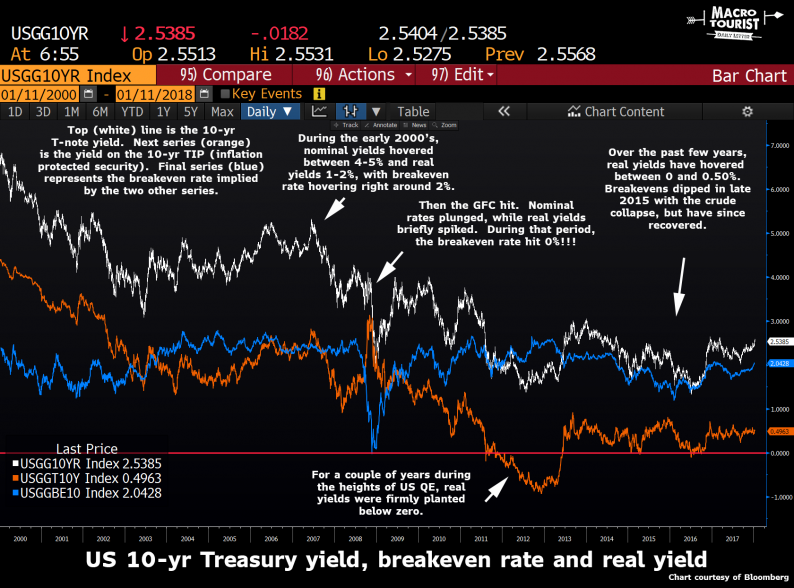I suspect in the coming years, we will hear much more about inflation protected securities (TIPS), and the accompanied derived breakeven rate. It is sometimes confusing to understand how nominal rates, real yields (TIPS yield rate) and breakevens all relate to one another, so I have made up a chart to help visualize the relationships.

The white series is the nominal 10-year t-note yield. This is the yield-to-maturity of a standard treasury security. The orange line is the yield-to-maturity for the equivalent TIPS security. The reason the TIPS yield is less than the regular t-note yield is that not only does a TIPS investor earn the quoted rate, but cash flows are augmented with the rate of inflation over the life of the security. Therefore, the difference between the white line (nominal yield) and the orange line (real yield) represents the market’s expectations of inflation. This is called the breakeven rate. If future inflation ends up being higher than the breakeven rate, then a TIPS investor will outperform a regular bond investor and vice versa.
Let’s spend some time going over the history of the different 10-year rates. At the turn of the century, nominal 10-year rates were 6%, real rates were 4% and breakevens were 2%. As the Dotcom bubble burst, nominal rates declined to 3.5%, with real rates basically following tick for tick, thus keeping breakevens stuck at 2%.
In the ensuing economic recovery, as Greenspan kept his foot firmly planted on the accelerator, all rates crept higher, but at the margin, nominal rates rose faster than real, driving up breakevens to 2.5%.
Then, even as the economy started rolling over, breakevens stayed at 2.5%, and it wasn’t until the Great Financial Crisis entered its panic phase that these relationships completely broke down. And man did stuff break…
Look closely at 2008. Nominal rates collapsed from 4% to 2%, but real yields actually rose! This had the effect of driving 10-year breakeven inflation rates to 0%! Think about that for a second. The market was predicting NO INFLATION for the following ten years. It gets even more absurd as my understanding is that TIPS cannot subtract return in the event of deflation (although it is a little more complicated due to the fact that inflation is accrued as opposed to paid out with the coupon), but you get the idea. When the market was pricing in a 0% breakeven, it was practically free money to swap into TIPS. It was probably one of the greatest trades of 2008, but since there was so much stupidity occurring during this period, it is often glossed over.













Leave A Comment